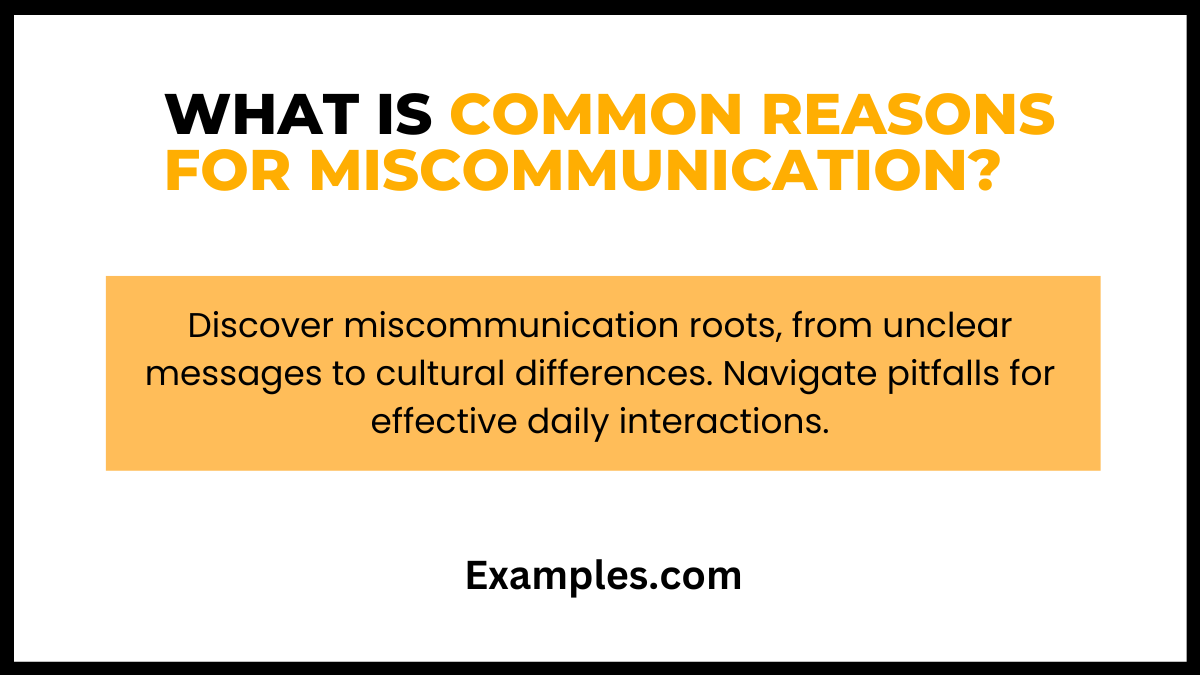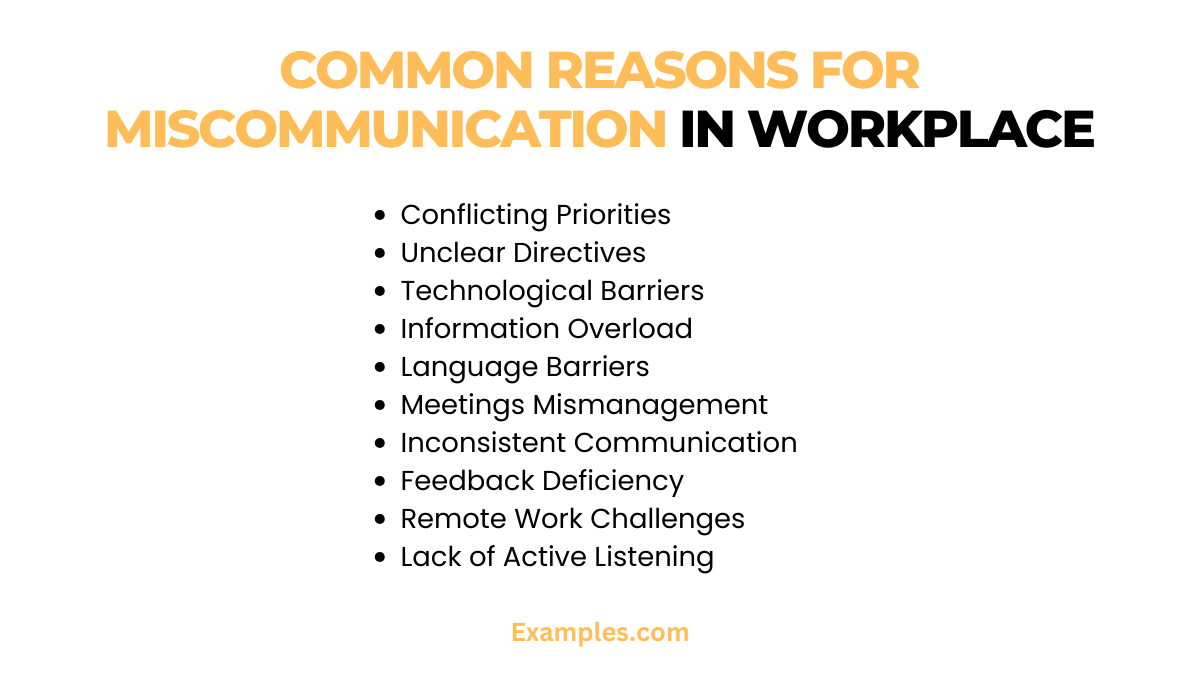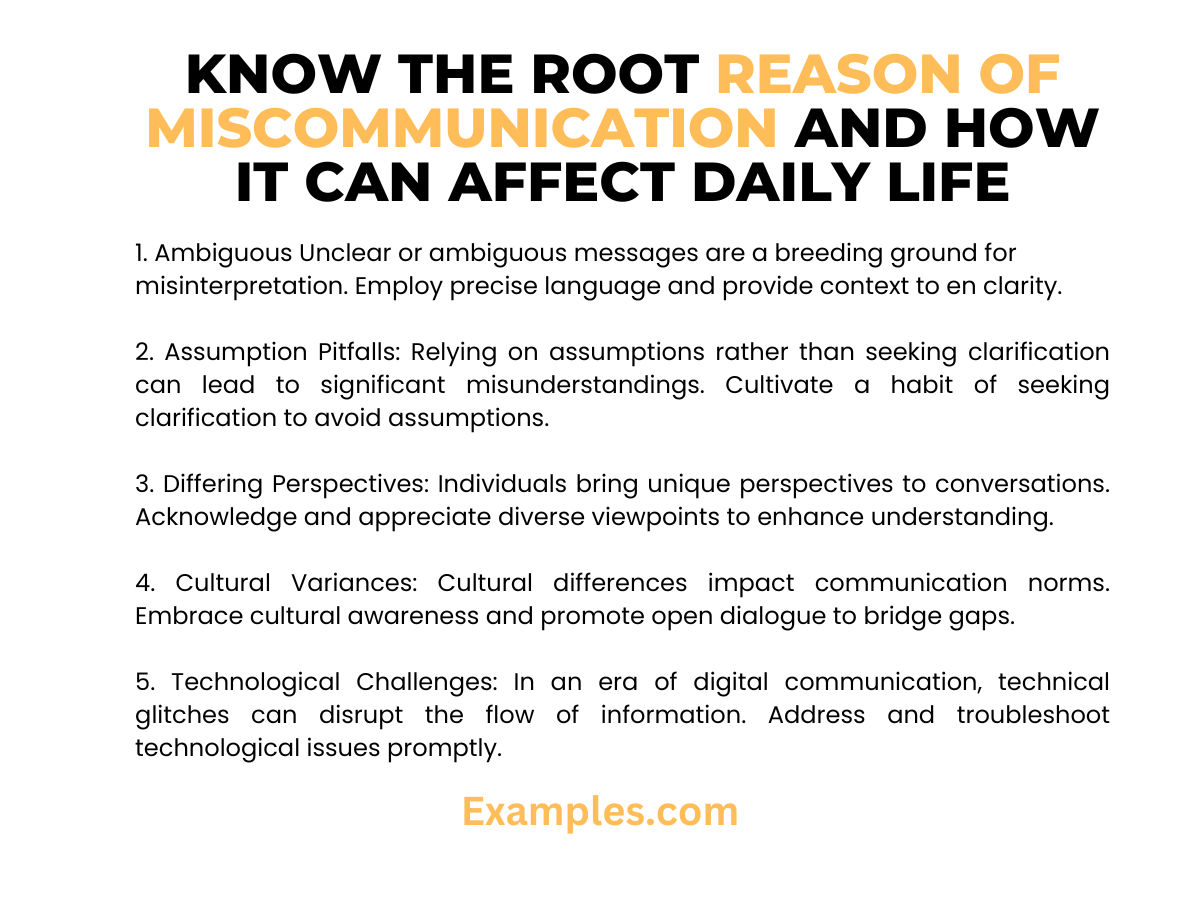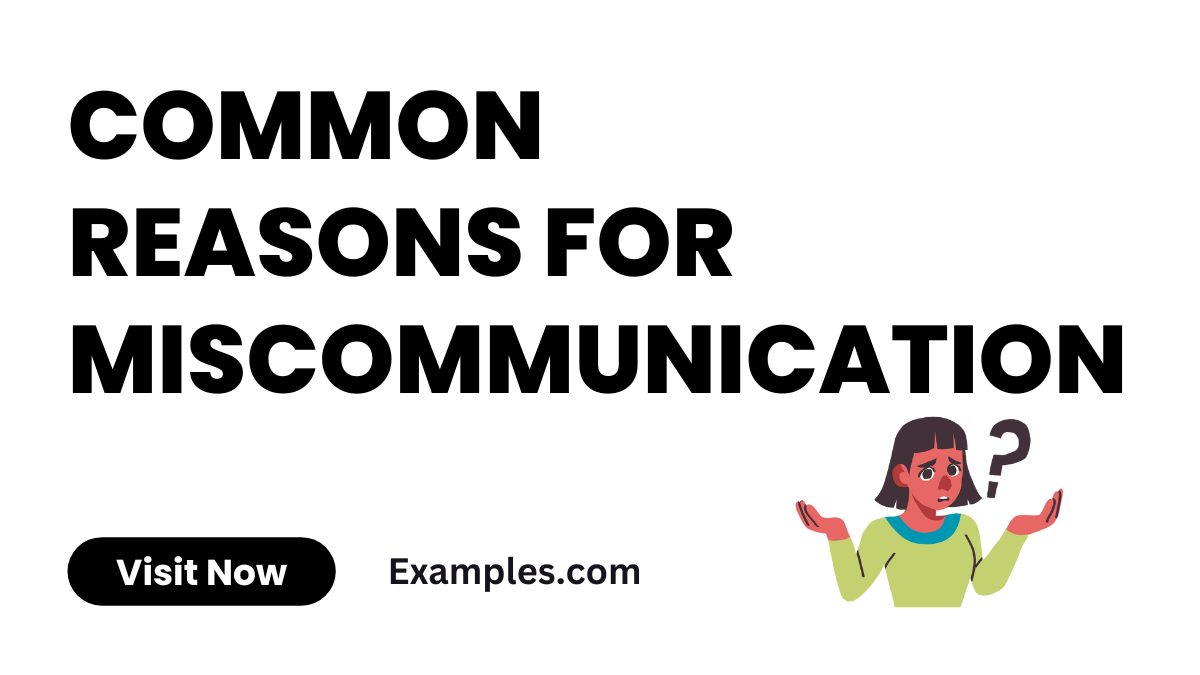9+ Common Reasons for Miscommunication Examples
Unlock the secrets of effective communication with our comprehensive guide on Common Reasons for Miscommunication. Delve into real-life scenarios and practical Communication Examples to navigate the intricacies of interpersonal exchanges. Explore the intricacies of communication pitfalls, discover effective strategies, and enhance your communication skills for more meaningful connections. This complete guide offers valuable insights, ensuring you master the art of clear and impactful communication.
What is Common Reasons for Miscommunication?

Common Reasons for Miscommunication refer to the factors that often lead to misunderstandings and breakdowns in communication. In simple terms, it encompasses various elements, such as differences in perception, unclear messaging, or cultural nuances, that hinder the intended exchange of information. Understanding these nuances is crucial for fostering effective communication, minimizing errors, and building stronger interpersonal connections. Explore the clear meaning and definition of Common Reasons for Miscommunication to navigate the intricacies of effective interaction.
Common Reasons for Miscommunication in Workplace:

Discover the intricacies behind communication breakdowns within the workplace. Identify pitfalls such as conflicting priorities, unclear directives, and technological barriers that impede effective communication. Learn strategies to overcome these challenges and foster a more cohesive and collaborative work environment.
- Conflicting Priorities: When team members prioritize tasks differently, it can lead to misunderstandings; establish clear project priorities.
- Unclear Directives: Ambiguous instructions can result in confusion; provide detailed and precise guidelines for tasks.
- Technological Barriers: Inadequate tech tools or understanding can hinder communication; invest in user-friendly platforms and provide training.
- Information Overload: Too much information can overwhelm; streamline communication by focusing on key points.
- Language Barriers: Diverse teams may face language challenges; encourage open communication and provide language resources.
- Meetings Mismanagement: Poorly conducted meetings can lead to miscommunication; structure meetings efficiently to convey information effectively.
- Inconsistent Communication: Varying communication styles within a team can create confusion; establish a unified approach.
- Feedback Deficiency: Lack of constructive feedback inhibits improvement; foster a culture of regular and meaningful feedback.
- Remote Work Challenges: Virtual teams may face communication hurdles; leverage technology and establish clear communication protocols.
- Lack of Active Listening: Failure to listen attentively can lead to misunderstandings; promote active listening practices within the team.
What is a Possible Reason for Miscommunication?
Miscommunication stems from various factors that can impede the clear transmission of information. Understanding these possible reasons is essential for fostering effective communication within any context.
- Ambiguous Messaging: Lack of clarity in communication can result in misunderstandings; be explicit and concise in conveying messages.
- Differing Interpretations: Individuals may interpret information differently based on their perspectives; ensure messages are easily understood by diverse audiences.
- Cultural Variances: Cultural differences can lead to misinterpretations; foster cultural awareness and sensitivity to enhance cross-cultural communication.
- Assumptions and Presumptions: Relying on assumptions rather than seeking clarification can result in significant misunderstandings; encourage open dialogue to dispel assumptions.
- Technological Glitches: Technical issues can disrupt communication channels; promptly address and resolve any technological barriers.
- Incomplete Information: Inadequate details can lead to confusion; provide comprehensive information to ensure a thorough understanding.
- Emotional Influences: Emotional states can impact how information is received; acknowledge and address emotions to promote clearer communication.
- Poor Listening Skills: Ineffective listening contributes to miscommunication; cultivate active listening habits for better understanding.
- Lack of Feedback: Constructive feedback is crucial for improvement; establish a feedback culture to enhance communication skills.
- Language Barriers: Differences in language can lead to communication breakdowns; employ clear language and provide language resources for diverse audiences.
Know the Root Reason of Miscommunication and How it Can Affect Daily Life:

Miscommunication is a pervasive issue with profound implications for daily life. Understanding the core reasons behind communication breakdowns is crucial for navigating personal and professional interactions effectively.
- Ambiguous Messaging: Unclear or ambiguous messages are a breeding ground for misinterpretation. Employ precise language and provide context to ensure clarity.
- Assumption Pitfalls: Relying on assumptions rather than seeking clarification can lead to significant misunderstandings. Cultivate a habit of seeking clarification to avoid assumptions.
- Differing Perspectives: Individuals bring unique perspectives to conversations. Acknowledge and appreciate diverse viewpoints to enhance understanding.
- Cultural Variances: Cultural differences impact communication norms. Embrace cultural awareness and promote open dialogue to bridge gaps.
- Technological Challenges: In an era of digital communication, technical glitches can disrupt the flow of information. Address and troubleshoot technological issues promptly.
Reasons for Miscommunication Occurs and How to Avoid it?
In the intricate web of human interaction, miscommunication can arise from various sources, impacting relationships and productivity. Understanding these common reasons is crucial for fostering effective communication.
-
- Ambiguous Messaging: Vague or unclear communication can lead to misunderstandings. Ensure messages are concise, specific, and free of ambiguity.
- Assumptions and Stereotypes: Preconceived notions hinder accurate interpretation. Encourage open dialogue to clarify assumptions and debunk stereotypes.
- Cultural Differences: Diverse backgrounds may lead to varying communication norms. Promote cultural awareness and sensitivity within the team.
- Lack of Active Listening: Inattentiveness breeds misunderstandings. Cultivate a culture of active listening to enhance comprehension.
- Technological Glitches: Communication breakdowns may result from technical issues. Regularly update and troubleshoot communication tools.
- Information Overload: Too much information can overwhelm and lead to selective understanding. Present information in digestible chunks to avoid overload.
- Emotional Factors: Emotional states impact communication. Encourage emotional intelligence and provide channels for expressing feelings constructively.
- Power Dynamics: Hierarchical differences may distort communication. Foster an open environment where all team members feel comfortable expressing themselves.
- Lack of Feedback: Constructive feedback is essential for improvement. Establish regular feedback mechanisms to address communication gaps.
- Mismatched Communication Styles: Differing styles within a team can cause confusion. Develop a shared communication approach to enhance coherence
In conclusion, mastering effective communication is pivotal in navigating the intricate landscape of Common Reasons for Miscommunication. This comprehensive guide offers valuable insights and real-world Examples to enhance your communication skills. By understanding and mitigating these pitfalls, you can foster clear and meaningful interactions, promoting success in both personal and professional spheres.
-



